► LaFerrari replacement priced at over £3 million
► 1,183bhp and 0-124mph in just 5.75 seconds
► Racing car pace with road car manners
For Ferrari, the F80 is a big deal. You may think that Maranello has its attention firmly fixed on upcoming big sellers such as the newly unveiled Amalfi and soon-to-be-announced electric SUV, but the F80 is personal. Strictly limited to 799 units (it’s already sold out), there’s a strong possibility you’ll never see one on the public road, but it’s rarified nature only adds to the mystique.
This is its halo model. A once-in-a-decade hypercar that will define the company’s future for the next ten years. If it’s average – hell, if it’s nothing short of burnished perfection – it’ll be a dark cloud hanging over Maranello and everything it produces until it’s replaced in the 2030s. That it’s following the wonderful LaFerrari (that itself replaced the brilliant Enzo) merely adds to the pressure.
As such, what you’re about to read is Ferrari going full Ferrari. The world’s most famed automotive marque putting its cards on the table and showing us exactly what its vast resources and know-how can deliver in 2025. This is quite simply unmissable.
At a glance
Pros: Brakes, balance, cabin, incredible speed, usable
Cons: Gearshift paddles could be longer, quiet from the outside
What’s new?
One of the main talking points on the F80 is the use of the Multimatic active damper tech seen on the Purosangue SUV. On that, it’s focused on controlling a hulking great big bodyshell and delivering the sort of grip and poise of a smaller, lower car. In the F80, meanwhile, it needs to deliver all of the above plus work with the car’s active aero technology to deliver the best all-round handling.
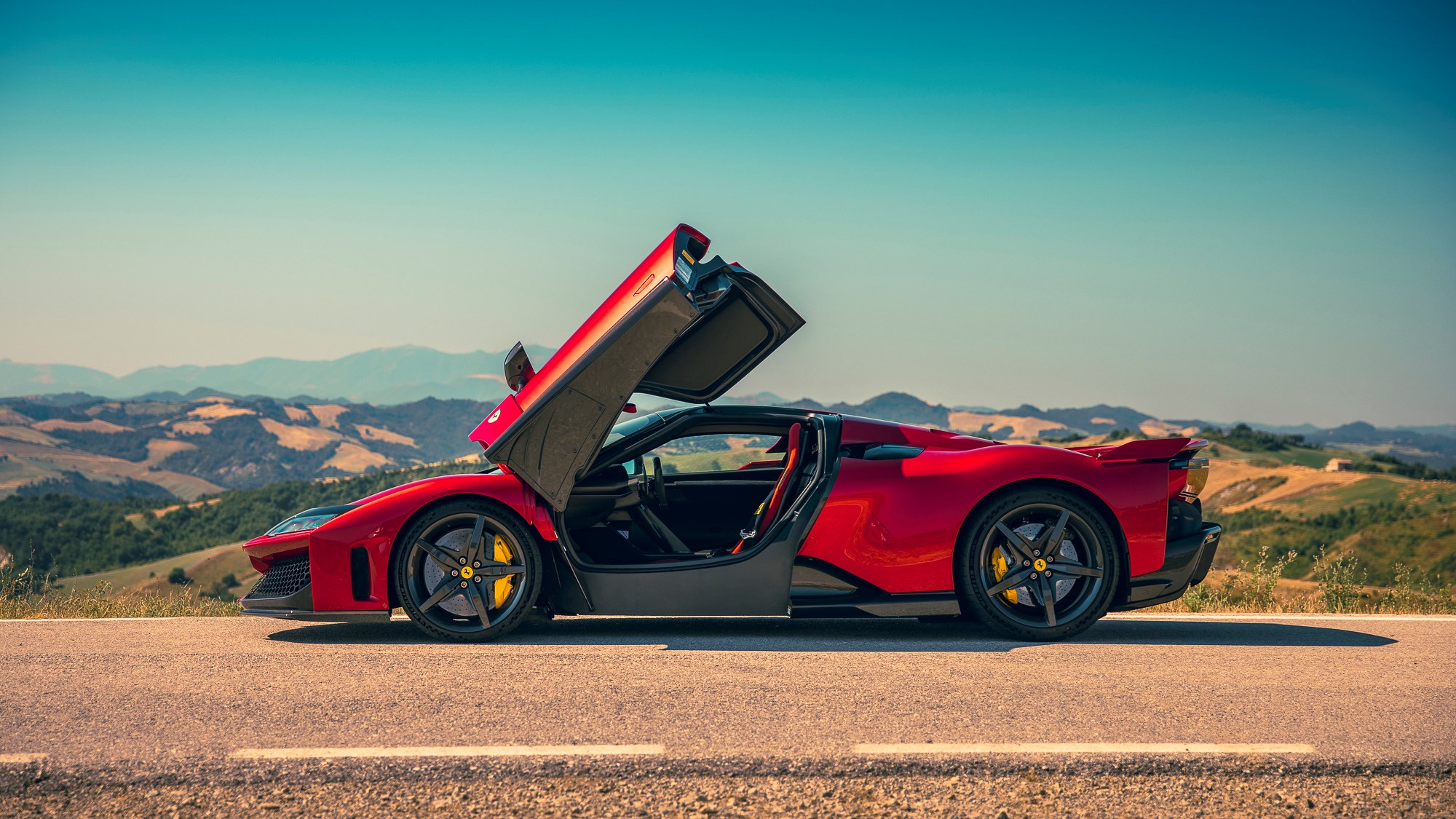
To get the most from the triplane front wing, active gurney flap, S-duct, giant rear diffuser (3x as long as the one on the LaFerrari) and active rear spoiler (adjustable by 11 degrees and 200mm), the active suspension needs to keep the ride height as consistent as possible across the axles – otherwise you risk fluctuations in the aero performance.
What’s more, the dampers (actuated by 48v motors on each corner), can generate additional forces on the individual wheel. This means that, for example, under braking the front of the car can be pitched upwards with the rear of the car pulled downwards – thus keeping everything flat.
Quickly dipping back to the F80’s aero, the numbers are deeply impressive. Total downforce is 1050kg at 155mph. For context a track-only Pagani Huayra R generates 1000kg of aero load but at 199mph… The F80 splits this with up to 460kg at the front and 590kg at the rear, but of course the active elements (namely the gurney flap and spoiler) do have a bearing on this in real time.
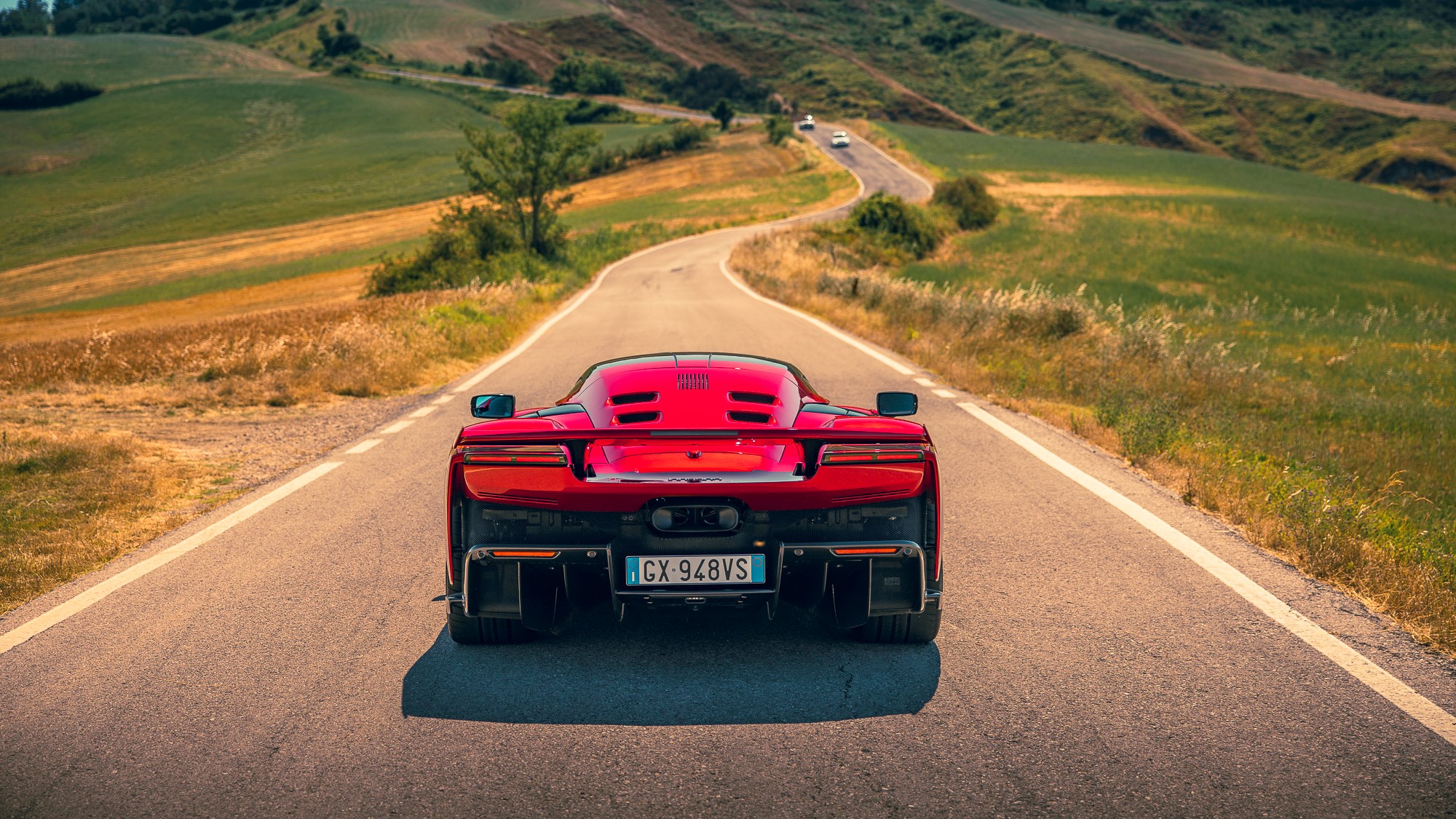
There’s also been considerable effort to control the thermal needs of the engine that has to dissipate over 200kW of thermal power during performance usage. This is primarily done by three high-temperature radiators, with two positioned laterally in outboard positions at the front and one in the central area of the bonnet.
There’s a couple of smaller steps taken to manage the heat, too. For example, there’s a transparent film embedded in the windscreen that uses power from the 48v system to demist the screen, thus putting less load on the HVAC system. Also, in order to keep the brakes cool the engineers used the hollow area of the impacting-absorbing chassis longerons to channel the high-energy cold air flow from the bumpers to the brakes. That results in a 20% increase in cooling air flow compared to the LaFerrari without any aerodynamic penalty.
What are the specs?
Since the LaFerrari was launched in 2013, things have changed somewhat. No longer is a hybrid hypercar seen as edgy and experimental, it’s now a necessity. Hence why Ferrari has lent into its knowledge bank and come up with a greatest hits combination of its past plug-in hybrids.
The F80, made up of a carbon tub and aluminium subframes, has three electric motors – like the SF90 – and a 3.0-litre 120-degree V6 – like the 296 (but this time with two electric turbochargers). That means two motors on the front axle (making what Ferrari calls e4WD) and one underneath the engine (and not in-between the engine and transmission like the SF90). Also note that this time there’s no plug and no pure-electric mode – presumably Ferrari realised that nobody in their right mind is plugging one in.
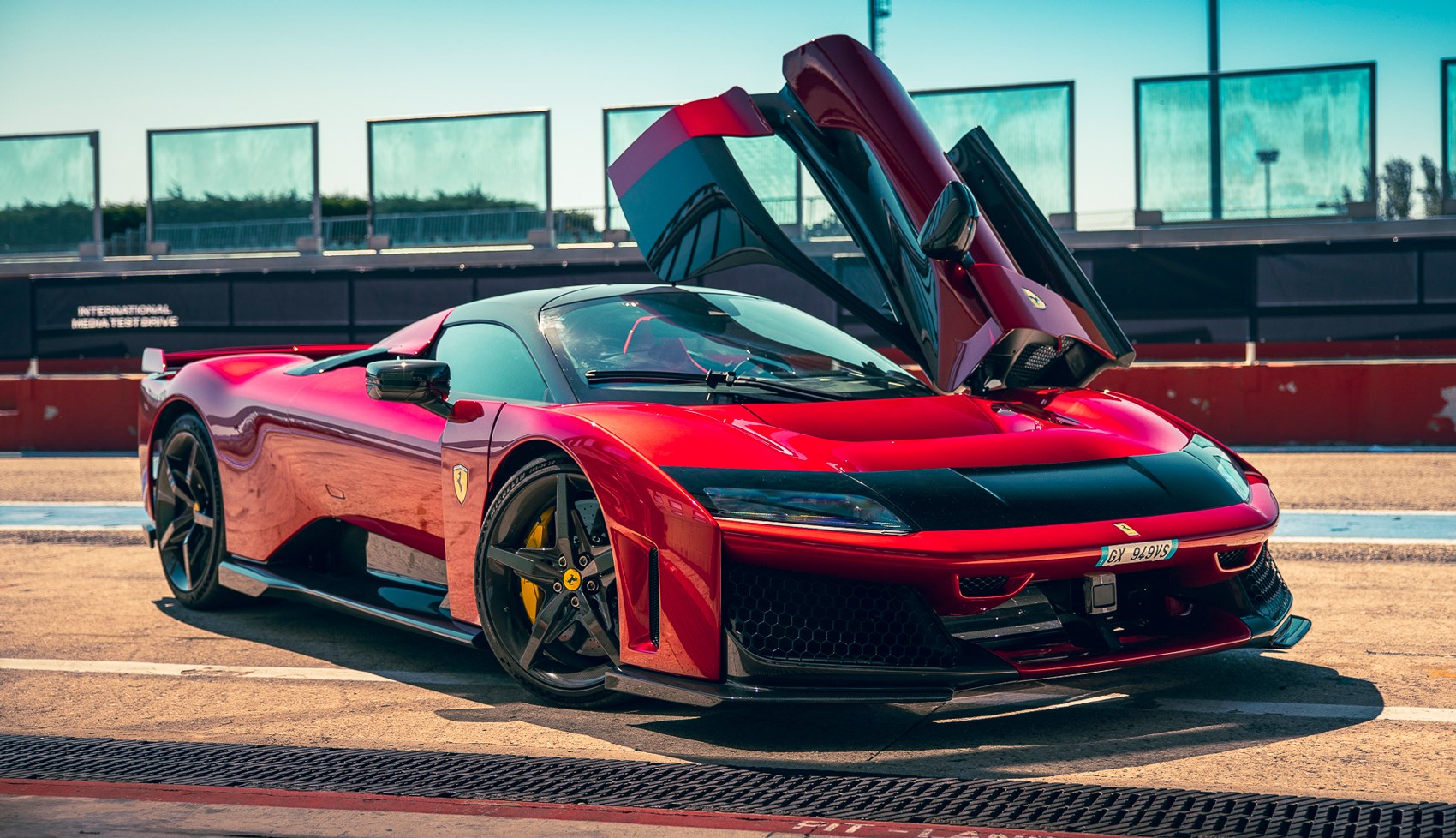
The resulting outputs are mind-blowing. The F80’s V6 alone makes 888bhp at 8,750rpm (that’s 234bhp more than the 296 GTB produces from the same V6, yet the weight is the same), while total system output is 1,183bhp and around 800lb ft of torque. 0-62mph takes a mere 2.15 seconds, while 0-124mph is done in just 5.75 seconds.
The all-wheel drive system also explains why the F80 is so much faster to 62mph than the McLaren W1 (2.1 vs 2.7 secs), but also perhaps why the weight difference (1,525kg vs 1,399kg dry) is what it is. Quite how McLaren plans to put yet more power (1,258bhp) onto the road with just rear-wheel drive is another thing entirely…
How does it drive?
We’ll start on track, largely because Ferrari describes the F80 as a racing car for the road. The circuit used for the test drives was Misano, near Rimini on the Adriatic Sea. It’s used for MotoGP, but also GT3 racing and it’s hard to escape the impression that the F80 would give the racing cars a run for their money. Indeed, Ferrari says that it’s latest hypercar is around five seconds quicker around Fiorano than the LaFerrari and even suggested that it would be on par, if not a little quicker, than a slick-shod 296 Challenge car.
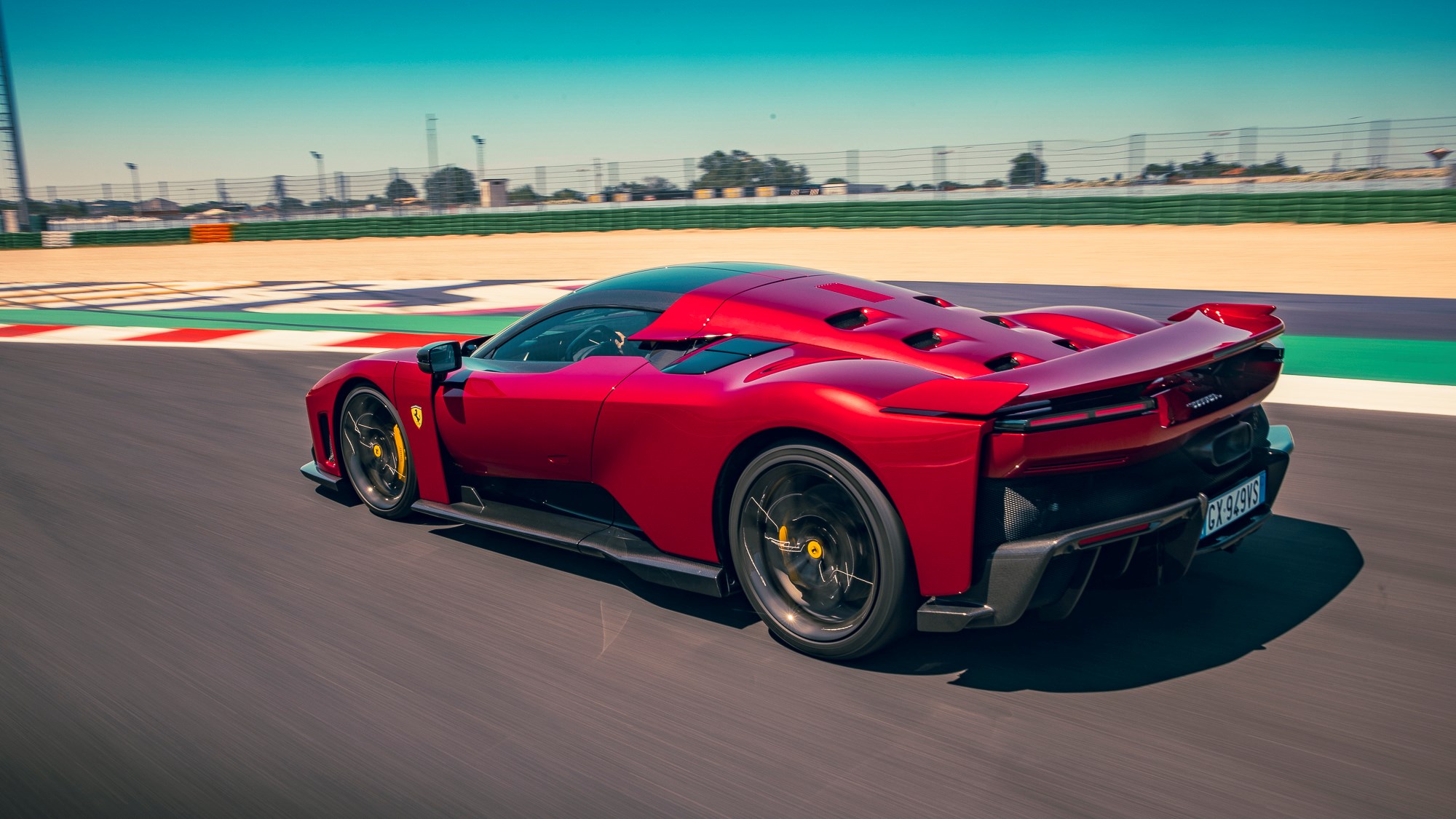
Three corners in and it’s not hard to see why. Coming into T1, a relatively fast right hander, the braking is ferocious. The F80 uses carbon brakes with CCM-R plus technology. This means longer strands of carbon fibre to improve mechanical strength (up 100%) as well as thermal conductivity (up 300%). Clearly, they work. And yet it’s not just the stopping power, the feel through the pedal is superb and all the more impressive when given the battery recharging that’s occurring through the brakes.
Lean into the faster stuff and the effect of the aero, too, is obvious. There’s an outright stability and poise to the F80 that many track-only cars would be envious of. And the ease with which it delivers those speeds is spectacular. Flex the throttle pedal and, between the electric twin turbos and electric motors, there appears to be next to zero lag.
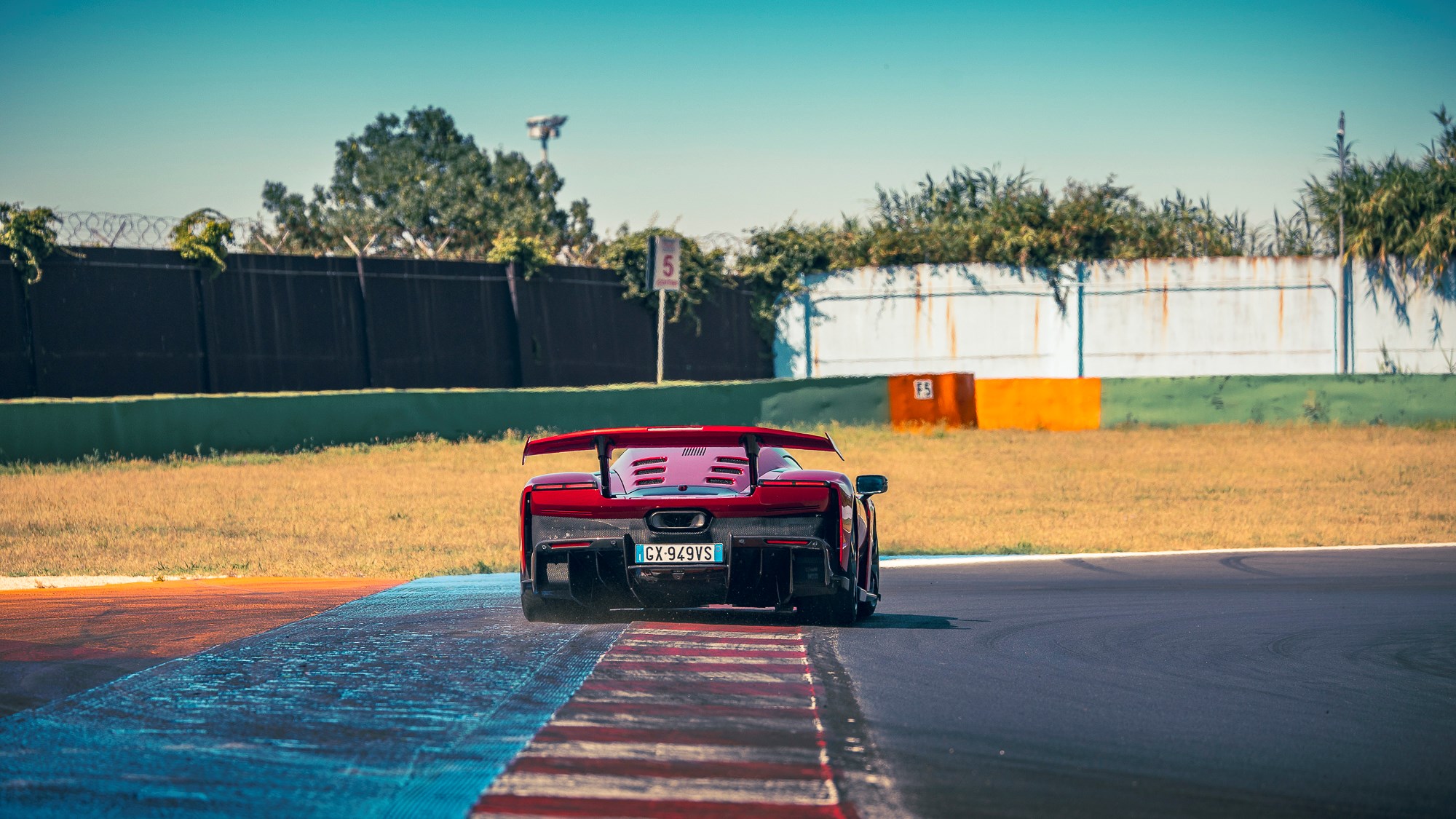
From the cabin, the sound is varied and cultured, but still unmistakably Ferrari. It’s just a shame then that from the outside, without the piped in sound, it’s disappointingly quiet. Ferrari blames noise regulations, but there’s still a lingering feeling they could have done better.
Overall, however, there’s few – if any – cars on sale that allow you to attain the sort of speeds the Ferrari F80 can on track with such ease and haste. It really is a super friendly, approachable car to drive and – through the various drive modes – makes 1,200bhp feel somehow appropriate.
But what of its behaviour on-road? Surely something so competent on the circuit cannot possibly replicate the behaviour on the public highway? Somehow, it does. The active suspension does little to disprove it’s the work of witchcraft by softening off the sharp edges of every single surface imperfection (and there’s a lot of them) on the country roads around Misano. All the while maintaining the sort of flat, stable platform that replicates the dreamy on-track handling. It’s damn clever.

It’s also a large part of what makes the F80 enjoyable even when you’re not pushing on. The suspension combines with superb feel from the brakes lovely steering and a responsive throttle to make pootling around at even 20% a pleasurable experience. Then, when the opportunity arises to open the taps, ‘Race’ Manettino mode is on hand to meter out the power in such a way that feels enjoyable but not intimidating.
What’s it like inside?
The F80’s cabin is arguably one of Ferrari’s finest in years. It’s 50mm narrower than the LaFerrari’s to aid with the overall design of the aero and packaging, but thanks to a staggered seating position (the passenger sits a little behind the driver), there’s no bumping of elbows.
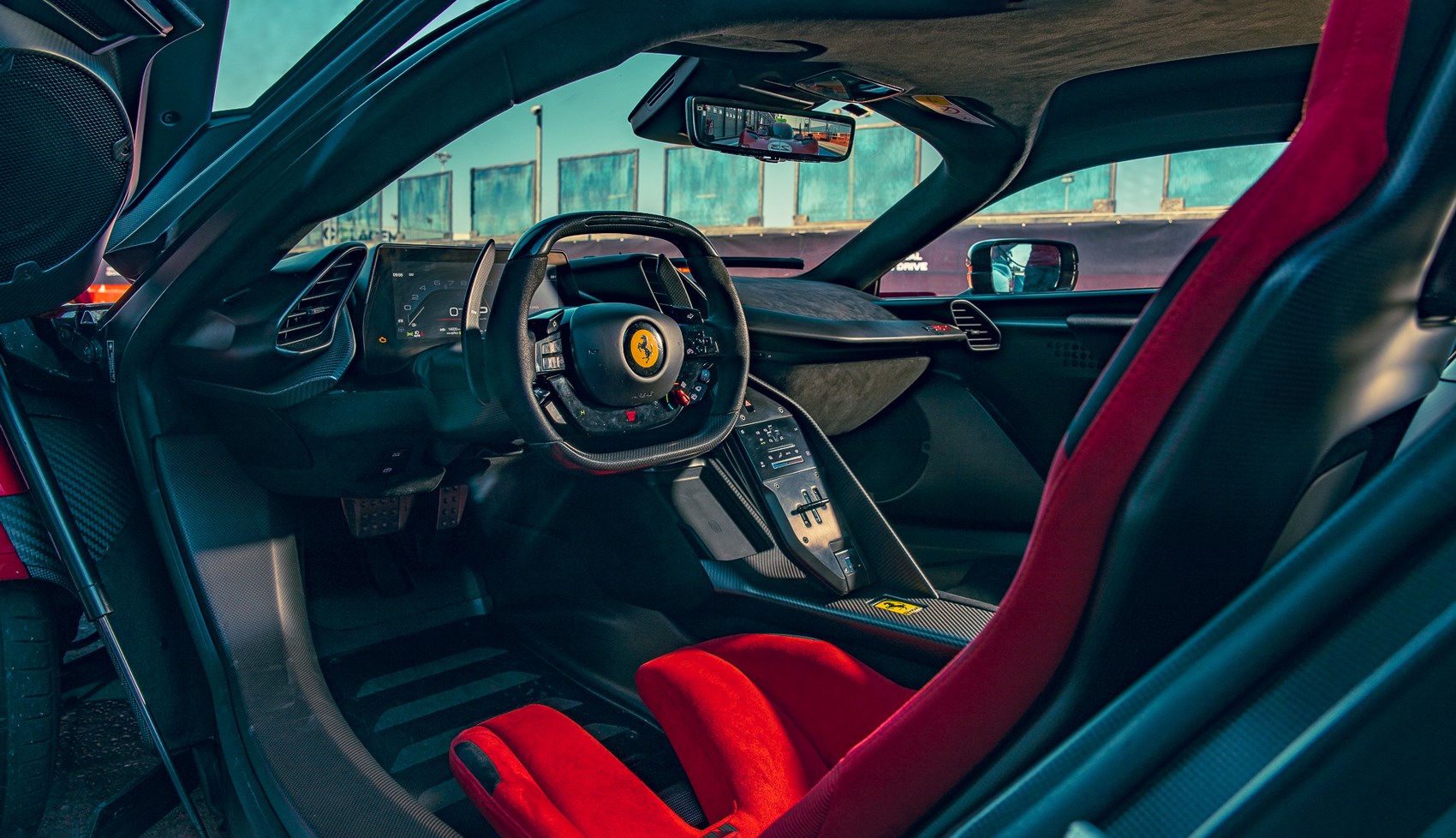
What’s more, the major controls and panels are angled towards the driver meaning everything is in easy reach, plus the horrendous touch panel steering wheel controls are gone and replaced by proper buttons – hurrah!
The steering wheel itself is also a lovely item to hold. Trimmed in alcantara and flat bottomed and topped, it fitted perfectly in my hands and completed a comfortable and involving driving position. Granted, the paddles should be longer (in order to aid short-shifting in right handers), but otherwise it’s an incredibly strong piece of cabin design.
Verdict: Ferrari F80
As mentioned earlier, Ferrari put its neck on the line with the F80 – as it has done with its predecessors. Going V6 over V12 was a bold move, but given the brilliantly well-rounded and complete nature of the car, it appears to have been the right one.
I have endless respect for how the F80 dissected Misano with unerring, quiet, calm precision. Yet I love it for how it behaves on road. Like a preened, pampered Serie A footballer thrown into a kickabout in the back streets of Naples yet still able to ride the leg-breaking tackles and put six through the makeshift goalposts, the F80 thrives in the real world.